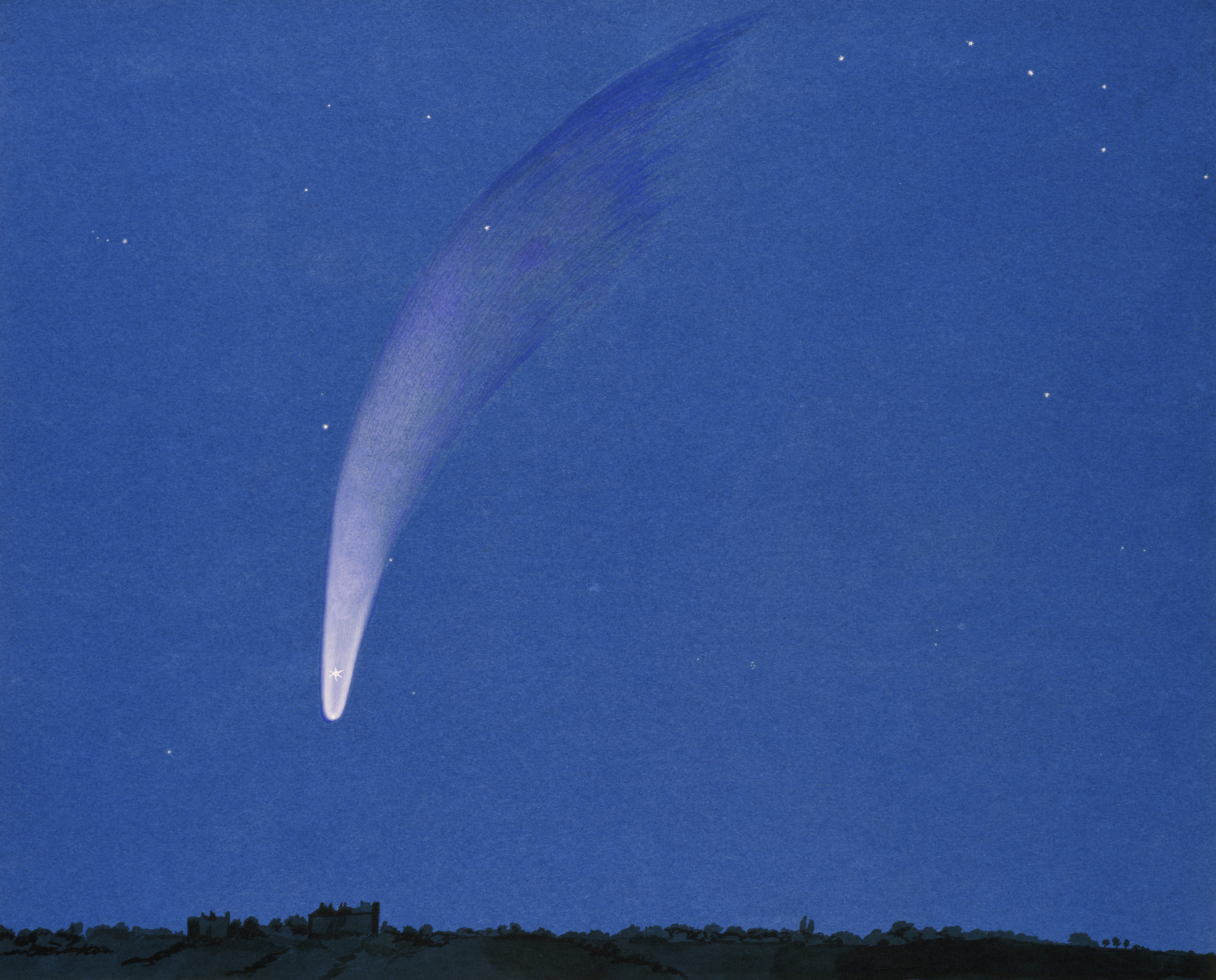 |
| September 30, 2018 |
A large flock of grackles amid the willows by the riverside, or chiefly concealed low in the button bushes beneath them, though quite near me. There they keep up their spluttering notes, though somewhat less loud, methinks, than in spring. These are the first I have seen, and now for some time, I think, the red wings have been gone. These are the first arrivers from the north where they breed.
I observe the peculiar steel-bluish purple of the nightshade, i. e. the tips of the twigs, while all beneath is green, dotted with bright berries, over the water. Perhaps this is the most singular color of any autumnal tint. It is almost black in some lights, distinctly steel-blue in the shade and contrasting with the green beneath, but, seen against the sun, it is a rich purple, its veins full of fire. The form of the leaf, too, is peculiar.
The pearly everlasting is an interesting white at present. Though the stem and leaves are still green, it is dry and unwithering like an artificial flower. Its white flexuous cotton. Its amaranthine quality is instead of high color. Neither is there any scent to betray it. Its very brown centre now afiects us as a fresh and original color. It monopolizes a small circle, in the midst of sweet-fem perchance, on a dry hillside.
I see undoubtedly the little dipper by the edge of the pads this afternoon, and I think I have not seen it before this season. It is much smaller than I have seen this season, and is hard to detect even within four or five rods. It warily dives and comes up a rod or two further off amid the pads, scarcely disturbing the surface.
The wind is northerly these afternoons, blowing pretty strong early in the afternoon, so that I can sail up the stream; but later it goes down, leaving the river glassy smooth, and only a leaping fish or an insect dimples it or makes a sparkle on it.
Some young black cherry leaves are completely changed some time to their deep cherry-red. Also they are rather dull, but beneath quite lively, like the juice of a freshly crushed cherry.
In our late walk on the Cape, we entered Gloucester each time in the dark at mid-evening, travelling partly across lots till we fell into a road, and as we were simply seeking a bed, inquiring the way of villagers whom we could not see, the town seemed far more homelike to us than when we made our way out of it in the morning. It was comparatively still, and the inhabitants were sensibly or poetically employed, too, and then we went straight to our chamber and saw the moonlight reflected from the smooth harbor and lighting up the fishing vessels, as if it had been the harbor of Venice.
By day we went remarking on the peculiar angles of the bevelled roofs, of which there is a remarkable variety there. There are also many large, square, three-story houses with short windows in the upper story, as if the third story were as good as a gig for respectability.
When entering the town in the moonlight we could not always tell whether the road skirted the back yards or the front yards of the houses, and the houses did not so impertinently stare after the traveller and watch his coming as by day.
Walking early in the day and approaching the rocky shore from the north, the shadows of the cliffs were very distinct and grateful and our spirits were buoyant. Though we walked all day, it seemed the days were not long enough to get tired in. Some villages we went through or by without communicating with any inhabitant, but saw them as quietly and distantly as in a picture.
H. D. Thoreau, Journal, September 30, 1858
A large flock of grackles amid the willows by the riverside keep up their spluttering notes, See October 14, 1857 ("I see a large flock of grackles, probably young birds, quite near me on William Wheeler's apple trees, pruning themselves and trying to sing. They never succeed; make a sort of musical spluttering.”)
I observe the peculiar steel-bluish purple of the nightshade . . . against the sun, it is a rich purple, its veins full of fire. See September 26, 1859 ("The peduncle and its branches are green, the pedicels and sepals only that rare steel-blue purple, and the berries a clear translucent cherry red."); October 4, 1857 (“Some nightshade leaves are a very dark purple.”)
The pearly everlasting is an interesting white at present. It monopolizes a small circle, in the midst of sweet-fem perchance, on a dry hillside. See August 23, 1858 (“I see dense patches of the pearly everlasting, maintaining their ground in the midst of dense green sweet-fern, a striking contrast of snow-white and green.”)
Steel-bluish purple
nightshade seen against the sun –
its veins full of fire.
Though we walk all day
it seems the days are not long
enough to get tired.











